Trivium's MusicRadar metal masterclass
Pay attention: class is in session
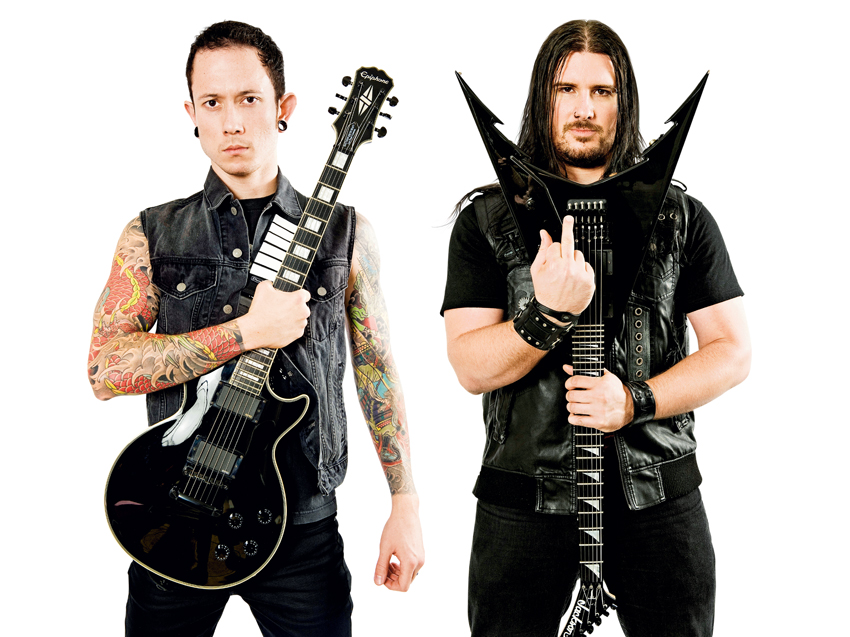
Trivium's MusicRadar metal masterclass
It's fair to say that Matt Heafy and Corey Beaulieu are perfectionists.
Matt was just 17 when Trivium released their debut album, Ember To Inferno, back in 2003, and throughout the ensuing decade he and co-guitarist Corey have continually experimented, prodded, poked and analysed their gear, their songwriting and – most of all – their guitar playing.
Still in their 20s, the guitarists have already learned a lifetime’s worth of lessons about all of the above. With their sixth album, Vengeance Falls (produced by Disturbed’s David Draiman), currently flying the flag for modern metal, we thought it was about time that metal’s finest students became the teachers.
MusicRadar asked the duo for their most important lessons and got schooled on everything from penning perfect solos, to amp-modelling advances and the pitfalls of pressure...
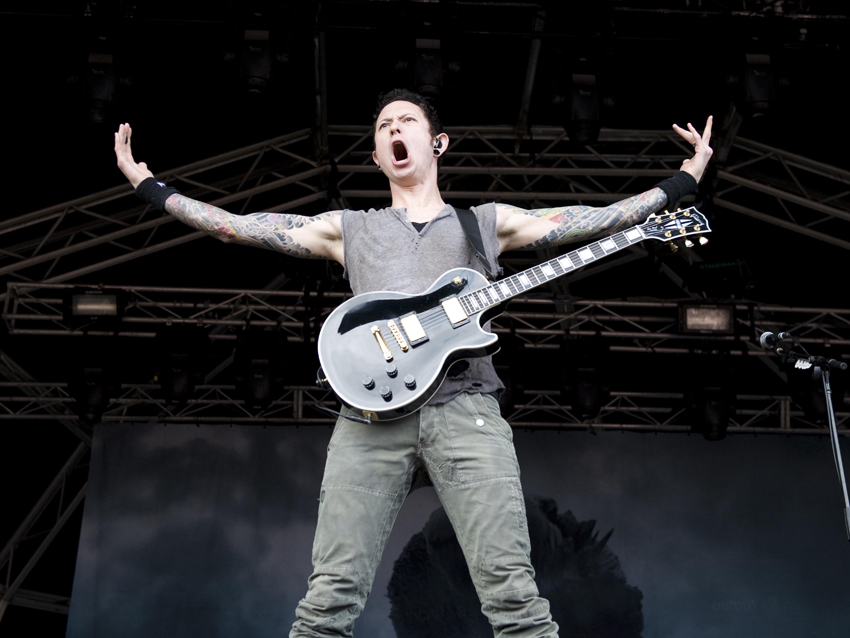
Set Your Blueprint
We’re not saying you need to plan what you play before you play it, but on 2005’s Ascendancy Trivium were able to recognise what was unique about their sound and home in on it.
MATT: “The song Like Light To The Flies set up several of the blueprints for our band. During the chorus there are semi-interesting guitar chords, then there’s a guitar melody on top of that, and the vocals are doing something separate. That was something you see a lot.”
COREY: “It was the first song we wrote together and it’s what got the ball rolling and got us signed to Roadrunner. That was one of the first songs we wrote where we tried to incorporate the two ideas of melodies and chords on top of each other.”
MATT: “Even on Shogun, the choruses have a guitar melody, a vocal melody, a rhythm guitar part and other stuff happening on top.”
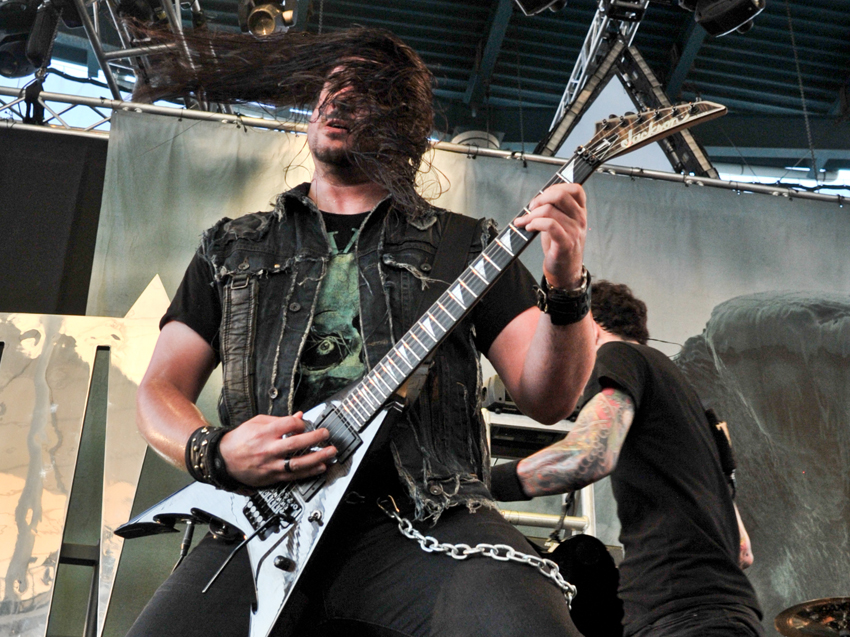
Rhythm = Foundation
For Trivium, working with producer David Draiman helped bring home the importance of groove on Vengeance Falls, but any lead player worth his salt respects the importance of honing those rhythm chops.
MATT: “I always say that rhythm playing is equal to, if not more important than lead playing, because lead guitar only comes out for bouts... As a kid, I would isolate parts of songs that I felt were exercises I could use.
"For example, down-picking – the intro riff for [Metallica’s] Blackened is a good one for that. I would sit there and loop it and break it down, and master the song with a metronome.”
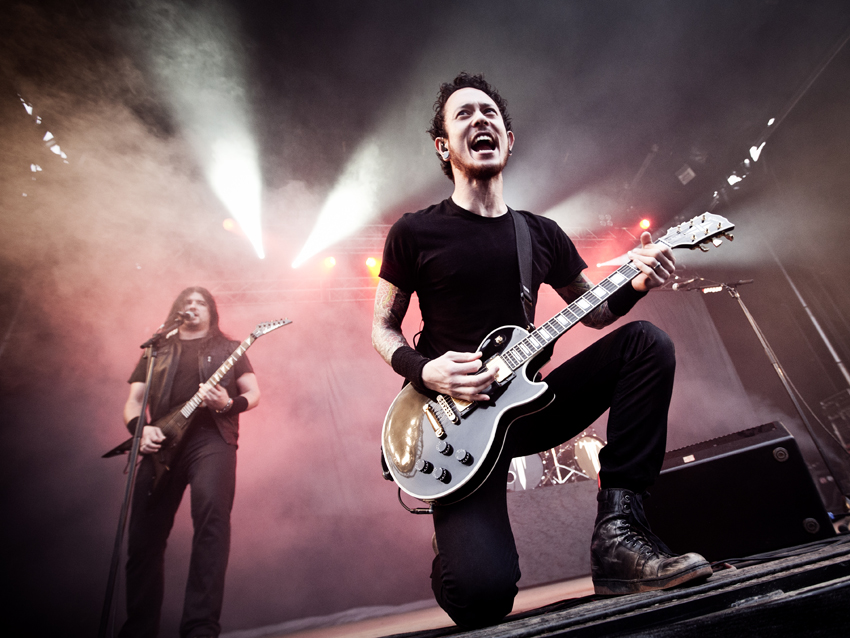
Solos Should Serve The Song
It’s all very well letting rip – but as Corey points out, you need to spend time getting to know a song before you can add to and enhance it.
COREY: “Listen to what you’re playing over – what the chords are, the tonality of it – and think about what kind of sound is going to fit. You’ve got to know the riff well enough to play notes that complement what you’re playing over.
"Certain solos, like Forsake Not The Dream from In Waves – it’s a simple chord progression, but if you break it down each section of the solo is played in the chord that you’re playing over. It follows the basis of that chord and everything lands on a 3rd or a 5th or a root note.”
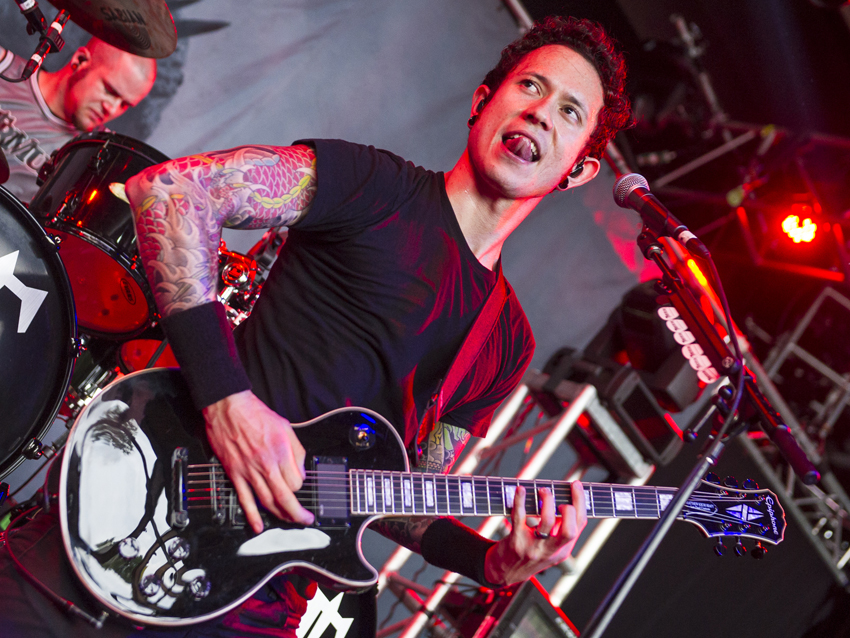
Don't Be Afraid To F**k Up
One of the things that holds back a lot of players is fear of failure. It’s easier to stick with what you know, but if you don’t try, you won’t learn.
COREY: “When learning what notes work for solos, don’t be afraid to f**k up, because that’s how you learn what works and what doesn’t. It’s about making it natural, so you can feel it. Train with a buddy playing simple chord patterns. Over time, you develop the ability to play like that without thinking about it, even playing fast.”
MATT: “I used to just find instrumental music and I would try to solo over it. It’s like trying to write a vocal part over a pre-existing thing – that’s the way I think of solos.”

Embrace Your Style
Over the years, Matt and Corey have frequently crossed into each other’s territory, but now they have a better idea than ever of their own personalities as players.
MATT: “For me, I think the style that I do best is melodic – not too shred-based. Dad solos! That’s the term I came up with. A ‘dad solo’ is stuff that you would expect from Peter Frampton, or from the school of Jimmy Page.”
COREY: “I like to think I’m ‘tasteful shred’. On the new record, [the song] Through Blood And Dirt And Bone has some really fast stuff that’s pretty technical and precise, but then it breaks it up with harmony guitars and melodies.” MATT: “That’s a good solo project name: ‘Corey Beaulieu presents Tasteful Shred!’”
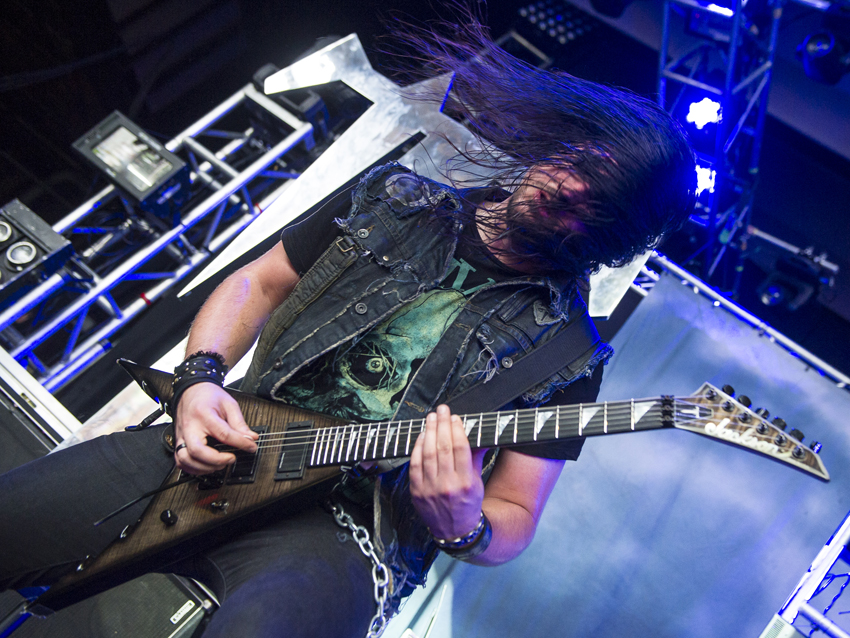
Create To Inspire
2008’s ambitious Shogun showcased a major step forward in Matt’s writing and the complex 11-minute title track still occupies a special place in the frontman’s catalogue.
MATT: “For me, Shogun is my biggest accomplishment [as a songwriter]. I love when I can hear a record and picture a movie in my head, and I feel with Shogun that’s a song that can depict that for a listener.
"The biggest compliment I get from someone being a fan of our band is when they’re inspired to create, whether picking up an instrument, starting a band, painting a picture or telling me what the songs mean to them. I want our creativity to inspire other’s creativity.”

Don't Be Afraid To Simplify
For all the complexity of Shogun, it was the stripped-back groove of 2011’s In Waves that proved the band’s biggest progression and, after initial doubt from fans, their greatest vindication.
MATT: “On Shogun, we had so many ideas and parts per song – but on In Waves we really made it about the song and not the technicality. In Waves is a very minimal song. When that song came out, guitar players were like, ‘Err, why aren’t you guys shredding your asses off?’”
COREY: “Everyone was like, ‘It’s too simple!’ Then they were doing guitar covers and they still weren’t playing the riff right! It was like, ‘You’re bitching about it being too simple, but how come no-one’s playing it right?’”
MATT: “What’s great about In Waves is that someone could sing you a riff to the song and you know what song it is.”
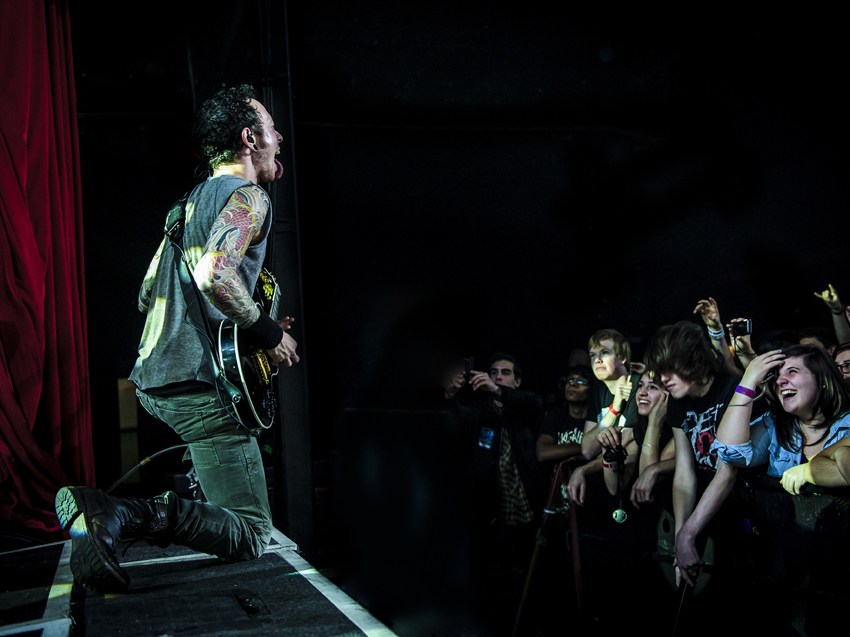
Know Thy Tone
There’s an adage about ‘going all the way around the world, only to find what you were looking for on your doorstep’ – and according to Trivium, the same could be said of tone.
COREY: “When we first started we were using Peavey 5150s. Then we went through all sorts of stuff and eventually, when nothing seemed to be like, ‘That’s the sound’, we went back to playing Peaveys.
"Now we know what amps make our sound. In Waves and Shogun were based off a 5150 and Ascendancy had a Mesa and a 5150, so for Vengeance Falls we knew, ‘We’re going to need an original 5150 block- lettered amp and a Maxon overdrive into a Mesa 4x12.’”
MATT: “With the Vintage 30 speakers. That’s always the starting point.”
COREY: “All of the bands that we listened to growing up, we’d be like, ‘What did they use on this album?’ And every one was like, ‘5150.’ ‘5150.’ ‘5150.’”
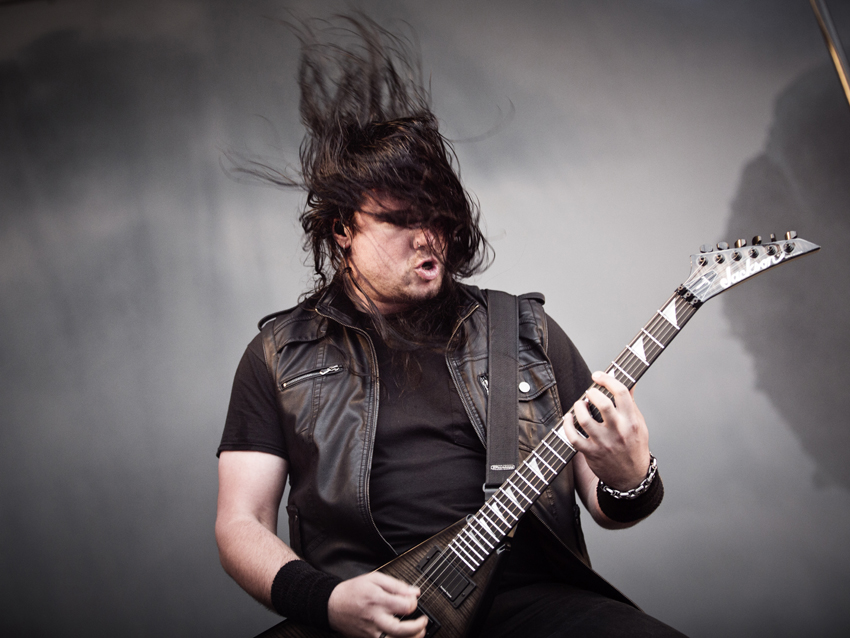
Don't Fear Technology
Even the most tried-and-tested methods can be uprooted by new technology. Case in point: valve-amp modelling is getting scarily good.
MATT: “Amazingly, this record is recorded with a Kemper Profiling Amp plugged directly into Pro Tools, so there’s no mic, no cab and the Vengeance Falls tone is just the Kemper...
"It’s a profile of an Andy Sneap tone out of his 5150 amp that Colin Richardson mixed – and I consider them the best metal guys for tones.”
COREY: “So, if any tube-head elitist compliments our record they can shove it up their ass!”
MATT: “For us, if it works on a record and it works at a 90,000-person festival and people are flipping out – then it works!”
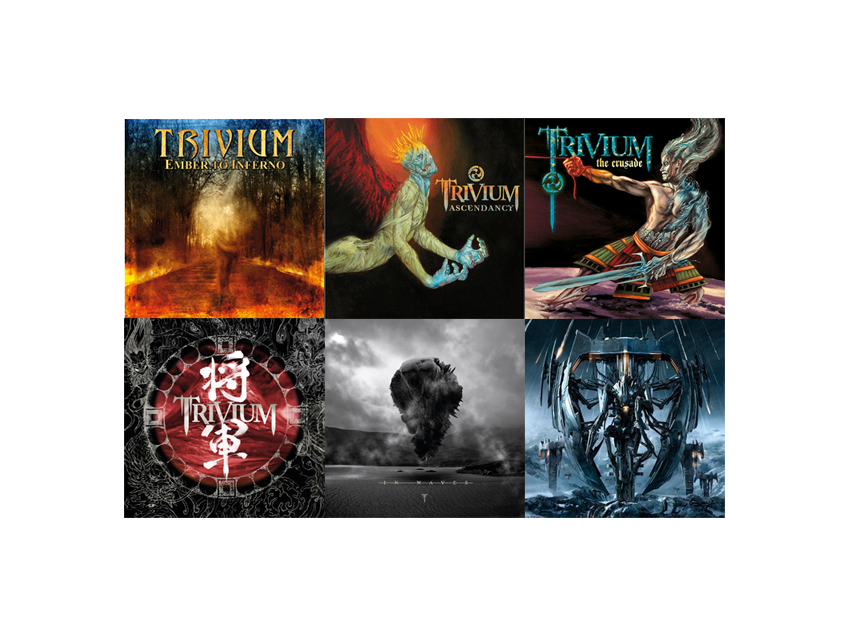
Six Education
1. Ember To Inferno (2003)
MATT: “Err, recording to a click is a good idea!”
COREY: “I didn’t learn anything because I wasn’t on it!”
2. Ascendancy (2005)
MATT: “I learned that when and if your band creates a style for itself
that is iconic and recognisable, perhaps, sometimes, it isn’t the best idea to change that!”
3. The Crusade (2006)
COREY: “With that record, it was standing up for yourself. We got
rushed into the studio, but [after that] we learned to put our foot down and do what we need to do.”
MATT: “My lesson is that all bands must do vocal in pre-production – I didn’t know what I was doing until the day we started recording the vocals!”
4. Shogun (2008)
MATT: “No matter how expensive a studio you record in, it could be the exact same as recording in a laptop studio.”
5. In Waves (2011)
COREY: “Shogun had some moments recording where I got burned out, whereas In Waves it was like, ‘You can actually make a record and have fun the whole time!’”
6. Vengeance Falls (2013)
COREY: “I learned that we can make a record that sounds amazing in a really short amount of time. You don’t need three months to track a record.”
Matt is a freelance journalist who has spent the last decade interviewing musicians for the likes of Total Guitar, Guitarist, Guitar World, MusicRadar, NME.com, DJ Mag and Electronic Sound. In 2020, he launched CreativeMoney.co.uk, which aims to share the ideas that make creative lifestyles more sustainable. He plays guitar, but should not be allowed near your delay pedals.


